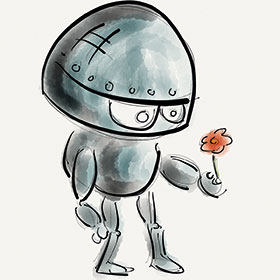

By the end of 2017, The United Nations Conference on Trade and Development (UNCTAD) reported an estimated 60 000 imports of multipurpose industrial robots into Africa. From a South African perspective, the dominant sectors in multipurpose industrial robot adoption are the mining and automotive industries. This is in line with global figures (automotive occupying 35% share of the robotic market), published by the International Federation of Robotics (IFR) in the World Robotics 2017 report. The mining situation in South Africa closely mirrors that of Botswana, where robots are now employed to minimise safety risks in the recovery of diamonds at depths that impose safety risks to humans.
This rapidly growing automation trend in the form of robotics has instilled fear in the minds of many Africans, and more so, South Africans. At the core of this anxiety is the fear of the unknown with regards to employment opportunities and employability, based on current skill sets. However, many other people are excited about this development as it cultivates the belief that it will resuscitate the currently sluggish aggregate demand.
Consequently, the epistemological thought that inextricably holds my imagination, gave rise to the question: “If a machine can do it, why learn it, why not learn something else?” At the World Economic Forum in January 2018, Jack Ma, who was ranked second in the annual ‘World’s 50 Greatest Leaders’ by multinational business magazine Fortune, in 2017, made a profound remark. He postulated: “We need to teach our kids things robots cannot do. If a robot can do it, we need to think twice.”
At the core of their education, young and future professionals must integrate human constructs that are antithetical to the phenomenon of robots. There are plenty of these, but this article focuses on two, namely:
Creativity, innovation and entrepreneurialism
Poetry, music, painting, drawing, dancing etc. are all arts that tap into innate human talents and deepened practice (formal and informal) of these activities has proven to be linked to what people term ‘innovation and creativity’. Robots, at least for now, cannot innovate and by their nature are not authentically creative.
Inherent human constructs
Values, empathy, collaboration through emotional connection to others, teamwork, independent thinking, critical analysis, persistence, influencing, and leadership etc. are constructs that robots, at least the current generation, cannot learn.
On reflection, where can one learn these constructs? In our basic education program in South Africa, when you harness the talents, skills, and resources of other learners, it is called cheating. In the workplace it is called leadership (i.e. using your network). People who did this in school were called cheaters. In life, they are called ‘connected’, ‘resourceful’ or ‘leaders’. Perhaps it’s a work vs education antithesis? This is something to ponder on going forward.
To conclude on this robot-human discourse, it is my belief that learning the above-mentioned human constructs, along with many other skills, will ease the ‘rivalry’ between humans and robots, and will lead to a more complementary approach between the two species.
Oratile Sematle

Oratile is the Electrical and Instrumentation manager at Sasol Group Technology. He holds a bachelor of science degree in electrical and electronic engineering as well an MBA from the University of Cape Town. As the former president of the Society of Automation, Instrumentation, Measurement and Control (SAIMC), he helps to drive the vision shared by council to address issues specific to the automation industry, and is partly accountable for the development of the automation engineering profession in South Africa. Oratile is a conference speaker and has spoken at engineering events such as Industry 4.0 and African Automation Fair. His ambition is to form cross-industry coalitions to tackle the social and educational problems experienced by disadvantaged communities.

© Technews Publishing (Pty) Ltd | All Rights Reserved